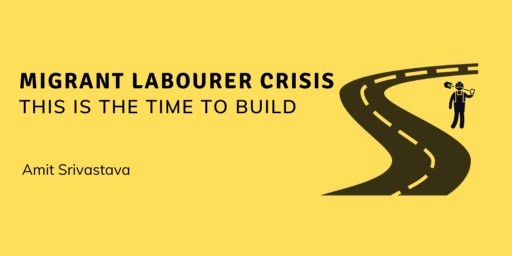Migrant workers crisis -This is the time to Build
 What Government of India can learn from the Nawabs of Awadh.
What Government of India can learn from the Nawabs of Awadh.Migrant Workers plight is the single biggest concern during the COVID19 crisis in India. The ugly underbelly of development without planning has been exposed in this crisis. Labourers are walking thousands of miles, dying on railway lines & scraping food off the roads. The scenes are gut wrenching. It has been 50 days that the lock-down started but central & state governments do not have a solution. How we reached here as a country is a complicated debate. We can get into that debate when things go back to some semblance of normal. Now that we are here, what can we do about this problem? The answer it seems is already there in our history books.
The Chalisa famine which started in 1780 and lasted almost 10 years, decimated close to 50% of population in areas of Delhi & Awadh. The famine was so devastating that even the elite of Awadh were failing to meet their daily needs. In 1784, Asaf-ud-Daula the nawab of Awadh started a grandiose project of constructing an Imambara. On the surface building a large monument during a famine seems heartless but as you dig deeper you see a different story. The goal of Imambara project was to provide employment for people in the region. A unique method was developed where the project could be extended indefinitely. Commoners used to work in the day building up the edifice, while elite worked at night to break down anything that was raised that day. The project lasted almost a decade while the famine lasted and gave employment to 20,000 people. The generosity of the Nawab is still remembered in the couplet:
Jisko na de Moula, usko de Asaf-ud-Doula
Meaning: He who does not get livelihood from God, receives it from Asaf-ud-Doula.
This was 150 years before Maynard Keynes suggested intervention for employment generation, during the recession of 1930’s. We need the current government to learn from the Nawab & implement the same.
As the migrant labourers go back to their villages, we will have a semi-skilled labour force spread over large part of our country with no work. It will only increase the pressure on the fragile rural economy. It is imperative thus that we develop industries for these labourers close to their villages. For these industries, infrastructure will be needed. This is the time to build that infrastructure. There are 2 impediments to doing the above:
Labour Laws – The current officer-raj of many forms & compliances chokes the spirits of industry. These bottlenecks need to be removed ASAP. Labour Laws are dependent on State governments & it is good to see some progress across board starting with Rajasthan, UP & MP.Cost of Land – If we artificially raise the cost of land for industry, we will have development concentrated to certain states & areas. This concentration of industry in certain states is the source of migrant labour problems. In 2014 the Modi government gave up on Infrastructure Development, after the Land Acquisition Ordinance debacle in Rajya Sabha. So much so that Mr. Modi’s bullet train project has not acquired even 1% of land it requires. It is time to revisit that Ordinance.Every crisis brings with it an opportunity to rebuild with better hindsight and purpose. COVID19 is an ideal opportunity to solve India’s infrastructure problem while providing relief & rehabilitation to migrant labourers.#migrantlabour #infrastructure #covid19 #india #employment
Your reactions,shares and comments are always appreciated.
Amit Srivastava is an author & consultant based in New Delhi, India. You can reach him on Twitter at @askaks




